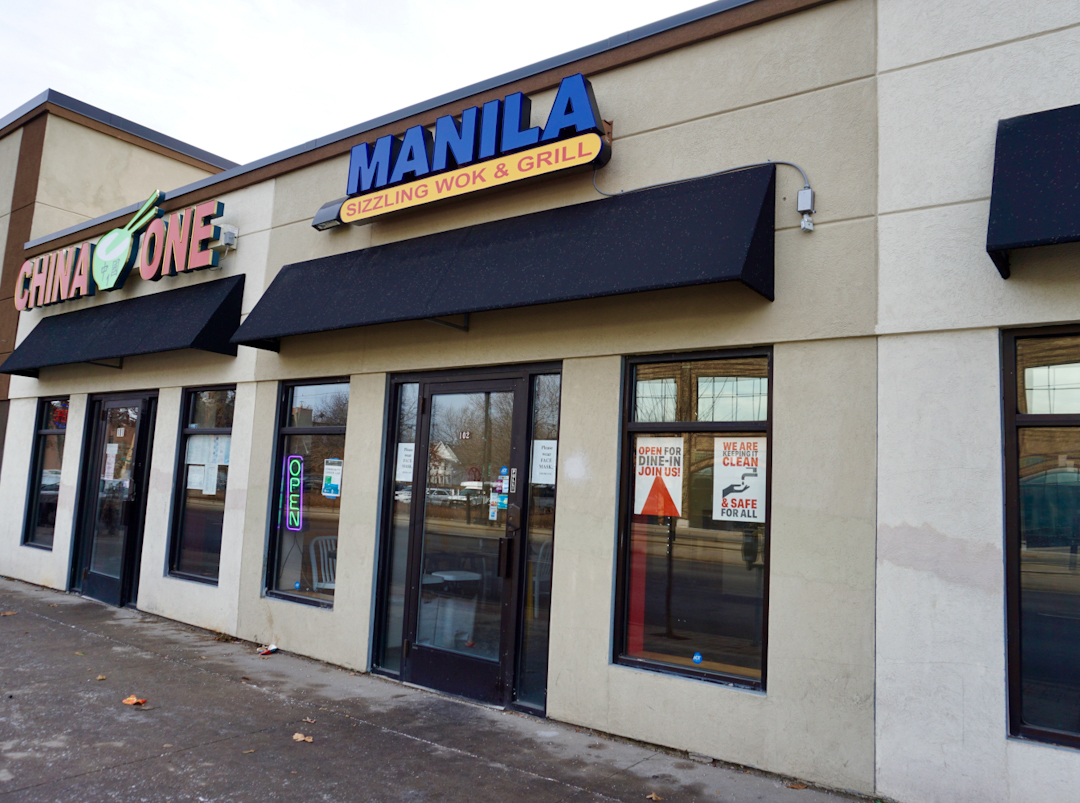
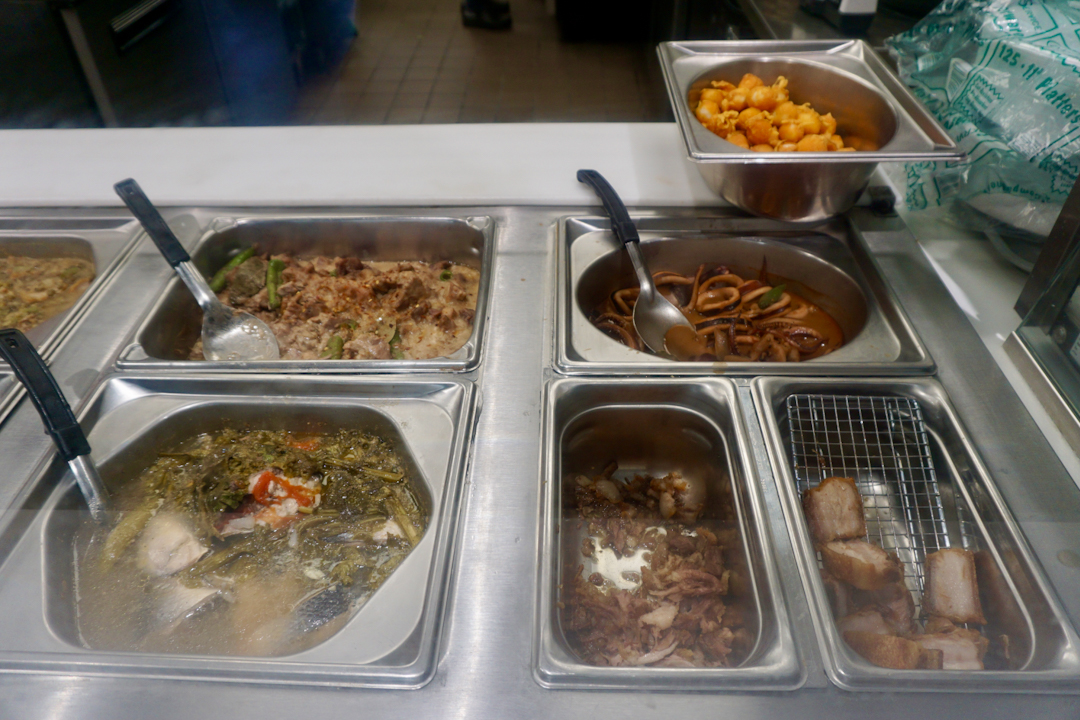
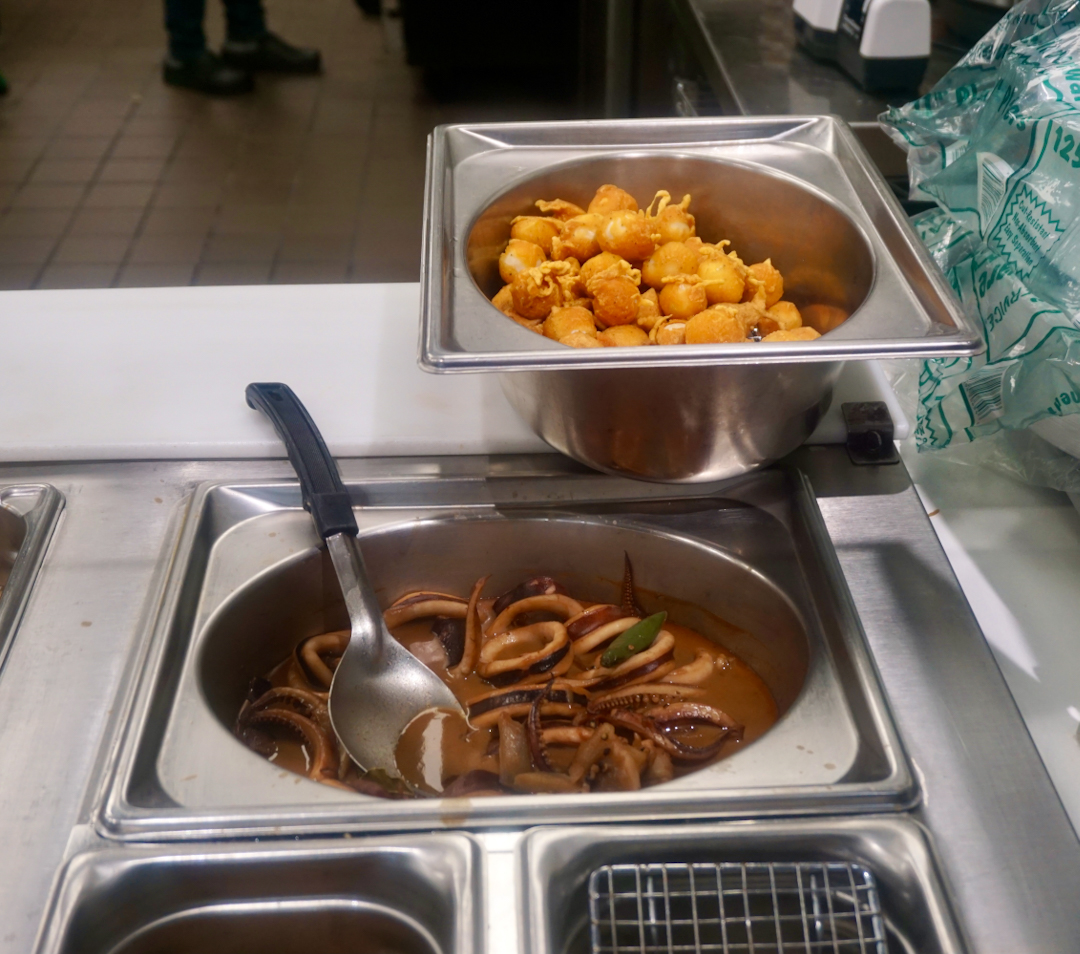
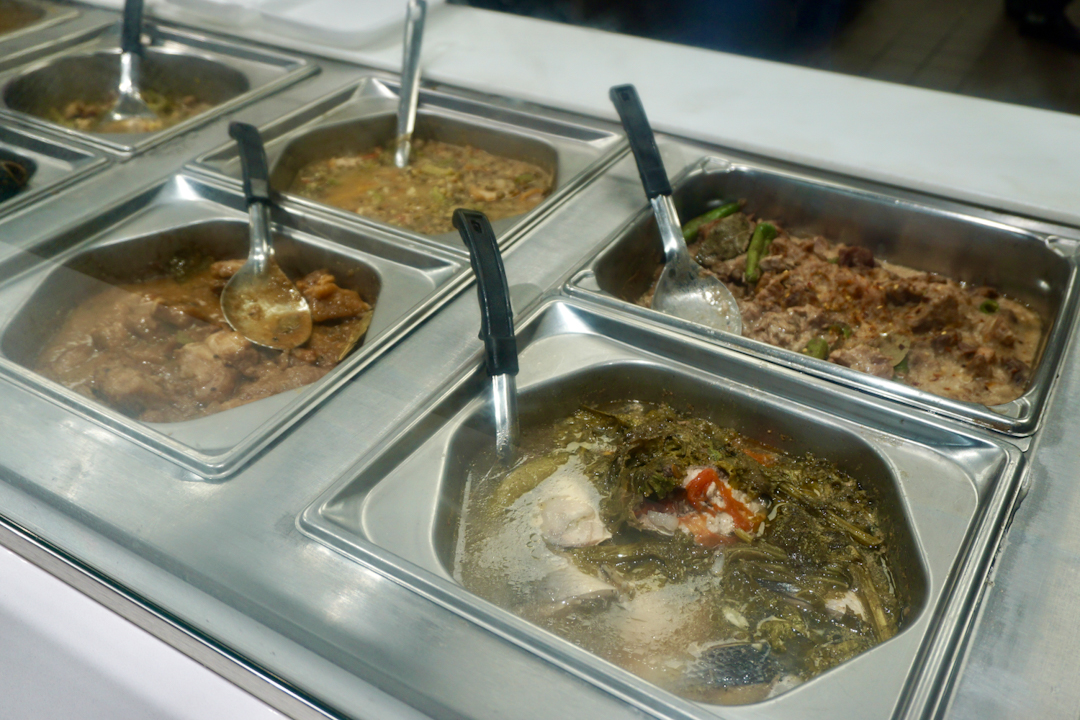
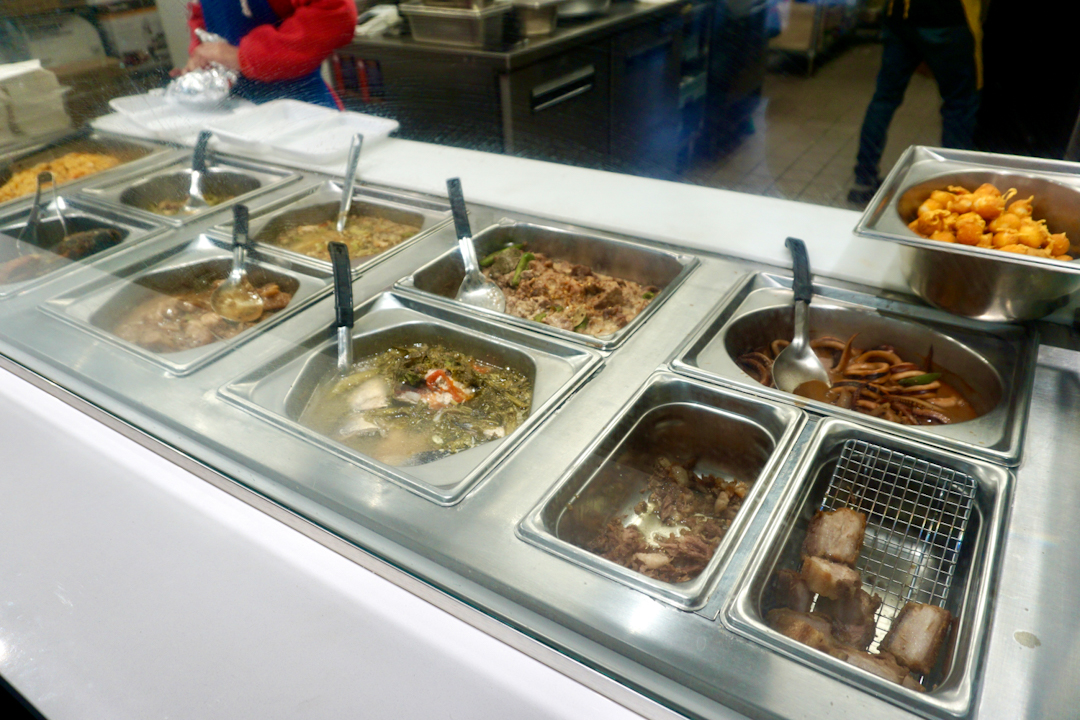
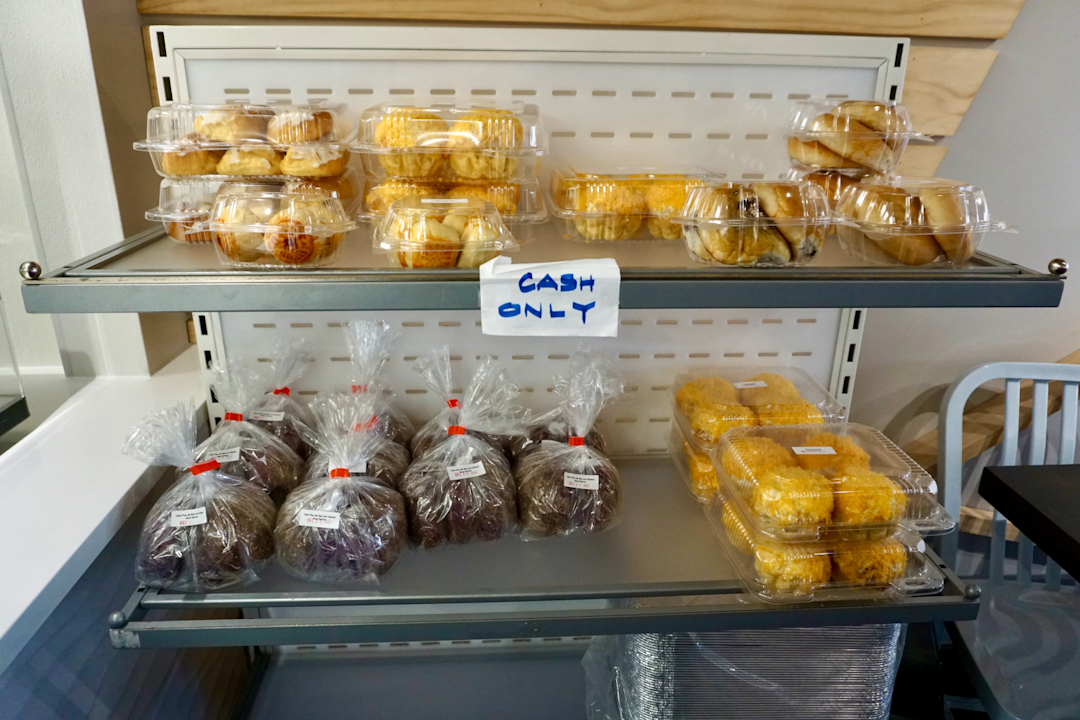
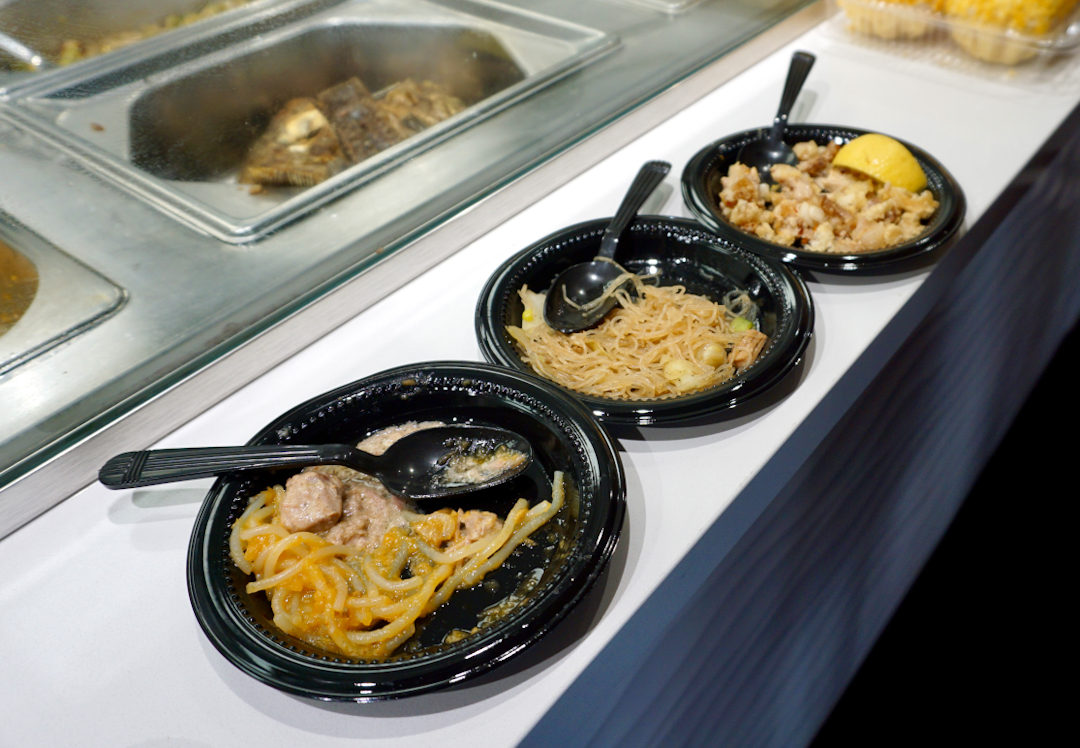
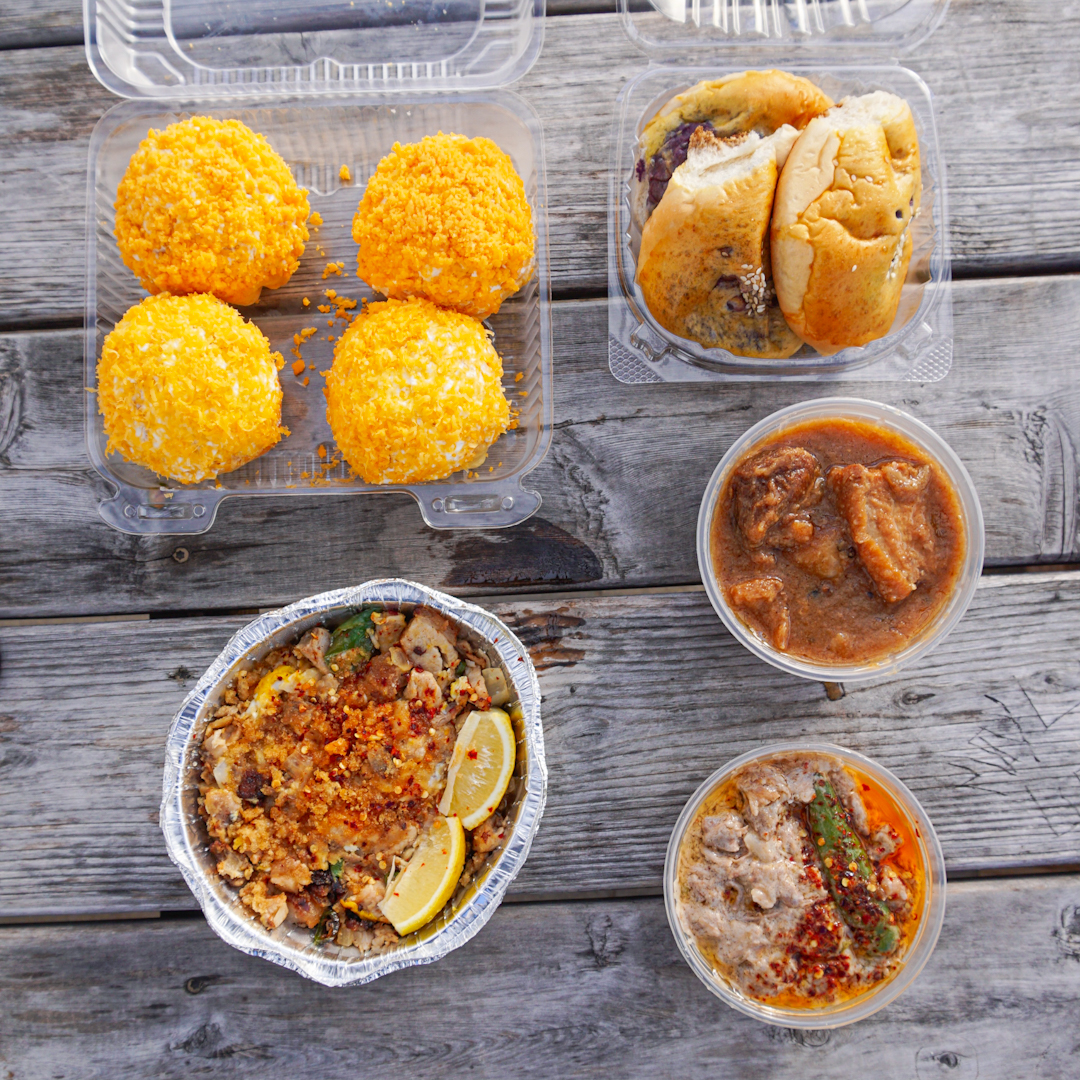
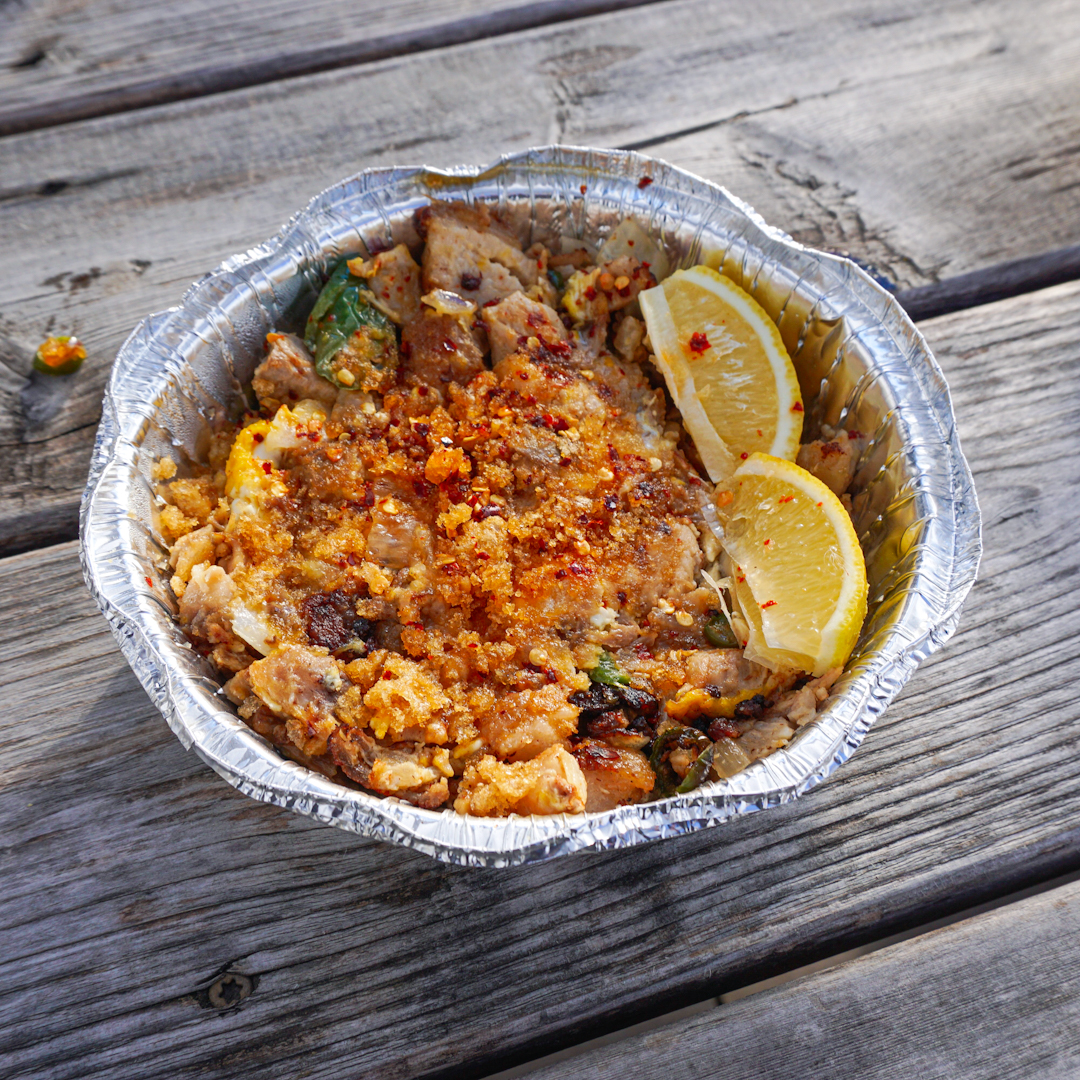
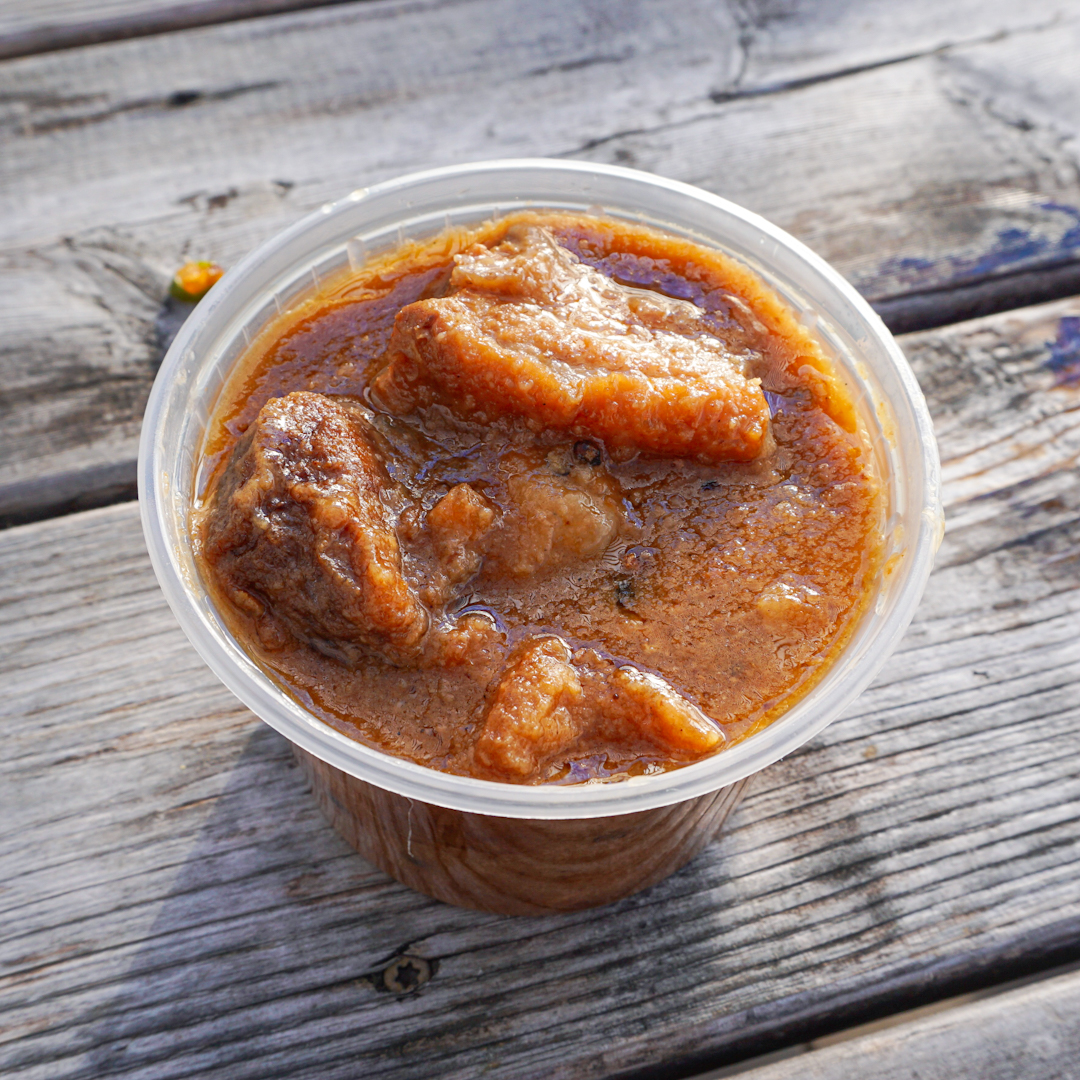
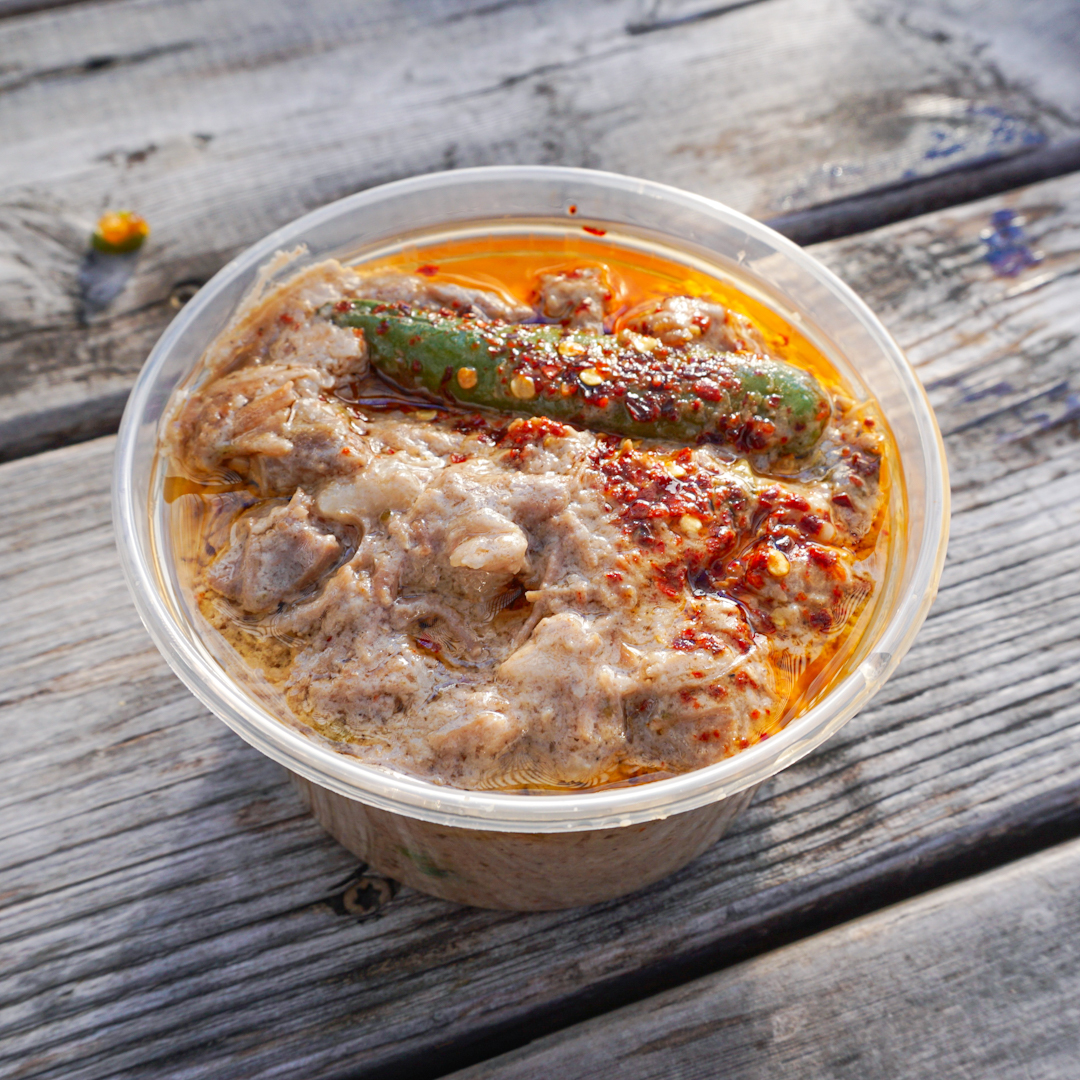
Manila Sizzling Wok & Grill is one of the best restaurants we have been to - not only just during our project, but we dare to say that it’s one of the best restaurants in the Twin Cities. This means a lot coming from us, given that Sandy grew up eating at most of the Asian restaurants in St. Paul and Paulina loves trying new food. Manila Sizzling Wok & Grill was a true hidden gem, tucked into a block of other restaurants on University Avenue.
When we went to Manila Sizzling Wok & Grill, we told the workers that we didn’t know much about Filipino food, but we were happy to try anything they recommended. Immediately, the owner, Rowan started scooping up food onto small plates and insisted that we try the food. We politely refused at first - we didn’t want to run them out of business with taking so many samples! However, Rowan continued to insist and we tried the samples. With each bite, our eyes grew wide -- the samples were delicious! We tasted so much flavor - in a way, Manila Sizzling Wok & Grill had managed to have a salty, sweet, tangy, crunchy, creamy, and spicy in every single dish.
Manila Sizzling Wok & Grill is a perfect to-go spot. The restaurant has food already prepared on warmers. You can choose between three portion sizes for each dish, with the options ranging at $6, $8, and $10. We got the $10 size for each dish, which turned out to be a generous portion at a great price range. There are some special dishes not on the warmer that you could ask for, such as sisig. When ordering, you can point to the food you want and tell the cashier the size of the order you want. Delightfully, Manila Sizzling Wok & Grill also had many sweet Filipino baked goods tucked on a rack, such as ube pan and ensaymada. For the pastries, you need to bring cash, but they are definitely worth it. Manila Sizzling Wok & Grill is a great place to visit during the pandemic, since you can get quick and delicious take-out.
The customer service at Manila Sizzling Wok was the best we’ve ever experienced! Rowan described each dish to us and educated us on their ingredients. At the end, we chose three dishes and two pastries: lechon paksiw, sisig, bicol express, pan de ube, and ensaymada.
Lechon paksiw (sweet pork) is tender and fatty pork belly braised in lechon sauce. Lechon Pakisw contained a multitude of flavors - fatty, salty, sweet. We loved the texture of the entree - the pork belly melted in your mouth and we could tell they spent many hours braising the pork belly. The lechon sauce consisted of mixed liver spread, consisting of vinegar, brown sugar, soy sauce, bay leaves, salt, and pepper. When the lechon paksiw hit our stomach, it felt filling and just right. The dish is heavy, but it reminded Paulina heavily of a similar Cantonese braised pork dish she ate growing up, only lechon paksiw was a little sweeter. Sandy was also reminded of Hmong sweet pork, but the Hmong version is even sweeter with a thinner sweet soy sauce. Sandy particularly enjoyed it, as it reminded her of the food that Hmong people eat at large gatherings, which she hasn’t had in awhile because of COVID-19. It’s interesting that all three of these cultures - Filipino, Hmong, and Chinese - have a similar braised pork belly, while American culture doesn’t have a similar dish. Lechon paksiw was Sandy’s favorite dish from our meal. She didn’t expect it to be simultaneously sweet, crunchy, and fatty. The fat in the sauce was phenomenal. When Sandy tasted the crunch at the skin, she fell in love.
Sisig (pork belly with ear, pig head, etc.) is a popular Filipino dish consisting of several parts of the pig, onion, green chili pepper, and egg, sprinkled with a crunchy topping. The meat included pork belly, pig ear, and snout. While pig ear and snout are not often common parts of the pig to eat, they brought great texture to the dish. Even though these meats sound intimidating, it’s definitely worth it trying it out once - you might find that you like it! With each bite, our tongues tasted fat in the pork belly, crunch in the vegetables, chewiness in the ear and snout. The egg brought cohesion to the dish. Not only was sisig a textural delight, but it also hit the major flavor profiles - salty, tangy, and fatty. Once we squeezed the lemon over the dish, the flavor profiles elevated 200 times greater. We are literally drooling while reminiscing about the delicious sisig while writing this. The sample we got from Rowan had an amazing crunchy topping, which we aren’t sure what it was, but added another level of texture. We recommend eating this right away - the crunchy layer can get soggy over time (especially in our world of food blogging, not everything stays the same by the time we are done with photos). Sisig was Paulina’s favorite dish because of the many layers of flavor and texture. We strongly recommend this for adventurous eaters, but if you didn’t know what sisig is and just ordered it, you will love it.
Bicol express (with added pepper) is a pulled pork dish stewed in coconut cream milk and chili peppers. Serrano peppers, thai chili peppers, and red pepper flakes brought a multitude of spices to the dish. When we told Rowan we loved spicy, he whipped out a huge container of red pepper flakes and spread it all over our entree. Usually Paulina usually hates pulled pork because it’s too tough, but she loved Bicol Express. The restaurant stewed the pork long enough in the coconut sauce to make it delectable. Bicol Express reminded Sandy of thai green curry because of the coconut sauce. However, Bicol Express was better because the sauce was greasier, spicier, and the coconut milk brought everything together. Note that when we say greasy in this post, it’s not a bad thing! The grease emulsified the meat, vegetables, and coconut sauce to make the dish not dry. The sauce wasn’t just coconut - it also had a savory, salty component to it with a red chili oil floating on top. Overall, the dish doesn’t look particularly visually appealing, but this dish is delicious and worth it to try out.
Pan de ube is a Filipino bread roll with purple yam paste, also known as ube. The pan de ube reminded us of a lot of other Asian breads -- not too sweet, fluffy, and filling. The ube paste is already sweet by itself. Sandy thought the amount of ube paste was perfect. Paulina would have preferred more of the ube paste, but overall enjoyed the roll. Sesame seeds topped the rolls, but did not add any extra flavor to it. The Pan de Ube came in a box with three rolls in it and it’s a great snack to start your morning.
Ensaymada is a sweet bread, topped with a light whipped butter and cheddar cheese. Initially, we thought it would be a savory cheese roll, but it turned out to be a thick, light, slightly cheesy dessert. Ensaymada is delightful - it hit interesting flavor centers, such as the saltiness of the cheese, the sweetness of the bread, and the creaminess of the butter. We’ve never tasted anything like this before. Ensaymada was an interesting combo of cheese and sweet bread. The whipped butter tasted more like a light whipped cream. Ensaymada was Paulina’s favorite pastry because of the complexity of the roll, while Sandy preferred the sweet Pan de Ube. One box includes four ensaymadas. Both are great options to try out at Manila Sizzling Wok & Grill.
We already have plans to return to the restaurant - if not for the food, the smile on Rowan’s face. Even though we ate this for lunch, we already wanted to return and eat at Manila Sizzling Wok & Grill for dinner. Rowan mentioned that there’s a different menu every day, so you might not be able to find the things we had on the day we go. They post their menu on Facebook every morning. We’re excited for the next time we go, since we know there will be a different menu. If you don’t head over to Manila Sizzling Wok & Grill and try out their food, you’re missing out big time.










